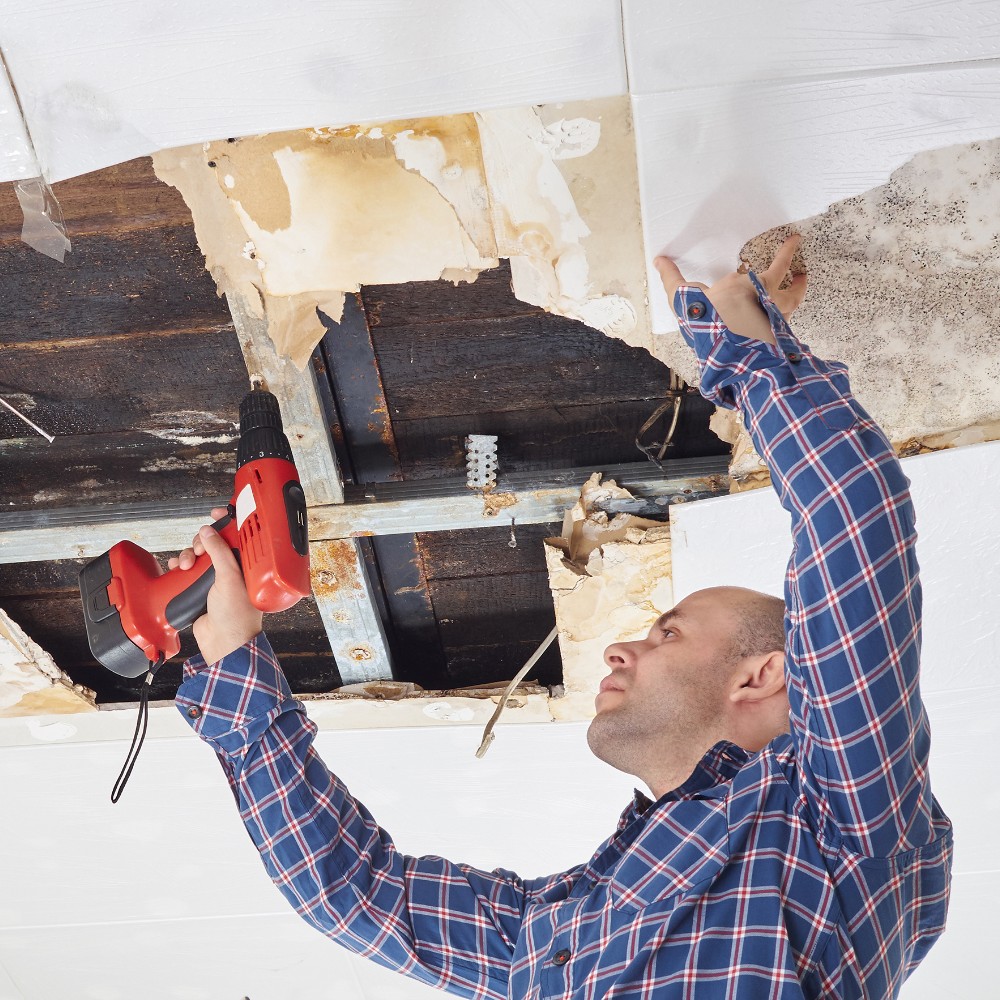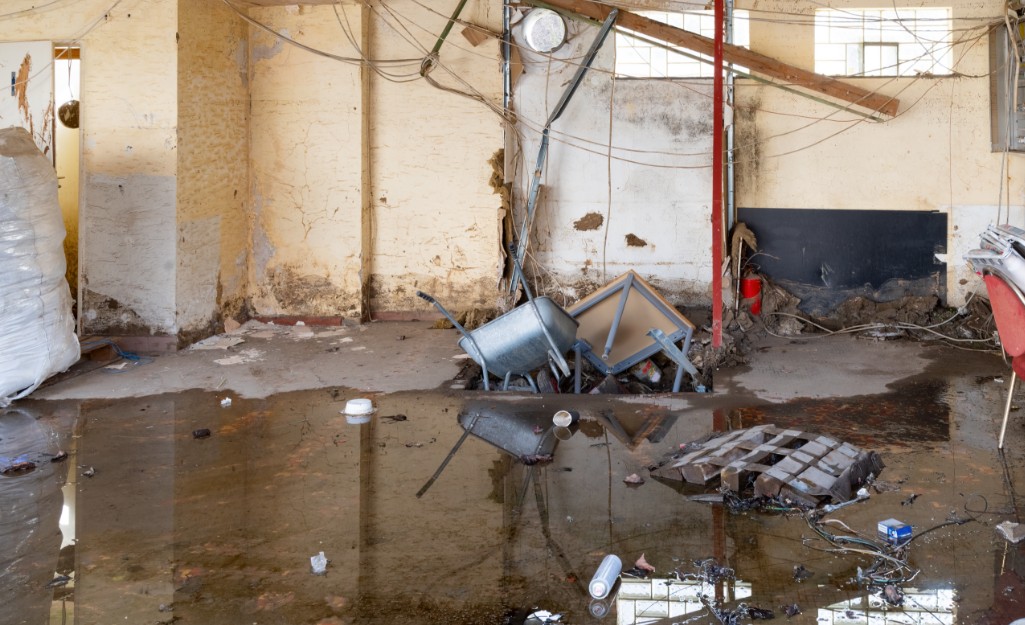Water Damage Restoration 101: Comprehending the Process and Cost
Water damage can strike all of a sudden, leaving house owners in a state of confusion. Understanding the reconstruction process is important for efficient recuperation. From assessing the damage to selecting the ideal provider, each action affects the total outcome and expense. Elements such as the sort of water damage and urgency also play a considerable role. What are the specific strategies made use of in repair, and exactly how can one get ready for potential expenses?
Sorts Of Water Damage

Preliminary Evaluation and Inspection

Water Removal Techniques
Complying with the initial assessment, reliable water removal strategies are utilized to alleviate damage and protect against additional issues. These strategies include using customized tools such as industrial-grade vacuum cleaners and submersible pumps - Water Damage Restoration. The choice of approach depends upon the volume of water existing and the sort of materials impacted. For standing water, completely submersible pumps are normally utilized for quick elimination, while vacuums are optimal for drawing out water from rugs and furniture. Additionally, advanced approaches like water extraction floor coverings may be used for hard-to-reach areas - Water Damage Restoration. The goal is to remove as much water as possible, decreasing the potential for mold development and structural damage. Prompt and efficient water extraction is vital in the total water damage restoration procedure
Drying Out and Dehumidification Process
Once the water removal is full, the drying out and dehumidification procedure comes to be essential to bring back the damaged area. This stage normally employs industrial-grade dehumidifiers and air moving companies to successfully minimize moisture levels. The dehumidifiers pull in damp air, eliminating excess humidity, while air movers flow air to speed up dissipation. Tracking tools is frequently used to track humidity and temperature levels, making certain excellent drying out problems. The duration of this procedure can vary depending on the extent of the water damage and ecological variables. It is crucial to extensively dry all affected products, including wall surfaces, flooring, and home furnishings, to stop mold development and architectural damage. Correct implementation of this action is important for a successful repair end result.
Cleaning Up and Sanitizing Affected Areas
A thorough first evaluation and inspection of influenced locations is essential to determine contamination levels once the drying out procedure is total. Flood Cleanup Services. Reliable cleaning techniques and ideal items have to after that be utilized to remove debris and discolorations. Ultimately, sanitization and sanitation techniques are vital to guarantee that damaging virus are gotten rid of, restoring the area to a risk-free problem
Preliminary Analysis and Examination
Before beginning any type of reconstruction efforts, an extensive initial assessment and assessment of the influenced areas are crucial for efficient cleaning and sanitizing. This procedure involves recognizing the level of water damage, figuring out the resource of the water breach, and Water Damage Restoration reviewing the products impacted. Examiners typically look for signs of mold growth, structural stability concerns, and damaged items. The analysis also includes checking moisture degrees utilizing specialized devices to ensure no concealed water pockets continue to be, as these can cause additional issues. Documenting the findings is essential for planning the following actions in the restoration procedure. A detailed first evaluation makes it possible for restoration professionals to create a targeted method for reliable cleansing and disinfecting, inevitably decreasing damage and health and wellness risks.
Cleansing Strategies and Products
Reliable cleansing and sterilizing of water-damaged areas require a range of products and methods tailored to the certain products impacted. For permeable surface areas like drywall and carpets, extraction techniques are important to eliminate excess dampness, adhered to by deep cleaning with specialized cleaning agents. Non-porous products such as floor tile or metal can be cleaned utilizing commercial-grade cleansers that efficiently eliminate impurities. Steam cleansing is one more reliable technique, especially for rugs and upholstery, as it utilizes heats to get rid of bacteria and mold and mildew (Water Damage Restoration). Additionally, green products are significantly preferred for their safety and security and efficacy - Water Damage Restoration. Eventually, selecting the ideal cleaning methods and items not only guarantees instant cleanliness yet likewise aids in stopping additional damage and carcinogen linked with water intrusion
Sanitization and Disinfection Techniques
When attending to water damage, proper sanitization and disinfection techniques are important to assure the safety and health of the damaged environment. After first cleaning, surface areas need to be treated with ideal disinfectants to get rid of pathogens, mold, and bacteria that prosper in moist conditions. Common techniques include using EPA-approved chemical disinfectants, which can be used via spraying or cleaning techniques. Additionally, ultraviolet (UV) light systems can properly disinfect areas by counteracting microbes without severe chemicals. The option of approach usually depends upon the kind of products affected and the degree of contamination. Eventually, complete sanitization not just recovers a secure living room but also aids stop future wellness risks related to lingering dampness and mold and mildew development.

Fixings and Restoration Options
Examining the damage triggered by water exposure is crucial for determining the ideal fixings and restoration alternatives. Home owners might face numerous issues, consisting of harmed drywall, distorted floor covering, and compromised structural aspects. Depending upon the level of the damage, fixings might include changing sections of drywall, mounting brand-new floor covering, or reinforcing architectural beam of lights. In cases of extreme damage, complete substitute of damaged materials may be needed. Furthermore, expert restorers usually suggest utilizing wetness meters to analyze covert moisture degrees before picking the very best strategy. It is vital to act immediately to stop mold development and additional damage. Selecting the best alternatives not just restores the residential property yet also ensures long-lasting safety and security and capability.
Aspects Affecting Restoration Costs

The extent of water damage straight affects the restoration costs homeowners can expect to sustain. Elements such as the resource of the water, the duration of exposure, and the affected materials considerably affect rates. For instance, clean water damage from a damaged pipe is generally much less costly to restore contrasted to damage brought on by sewage. In addition, the level of contamination determines the demand for specialized cleaning and disposal services, even more raising costs. Geographic area also contributes, as regional labor rates and schedule of restoration solutions can differ. Ultimately, the seriousness of the action affects costs; quicker treatments typically result in lower general expenditures by preventing additional damage. Recognizing these variables is essential for home owners when approximating repair expenses.
The three primary types of water damage are categorized based on contamination levels: tidy water, grey water, and black water. A thorough initial analysis and inspection are crucial actions in the water damage remediation procedure. For standing water, submersible pumps are commonly used for rapid removal, while vacuum cleaners are optimal for extracting water from carpetings and upholstery. The extent of water damage directly affects the restoration sets you back house owners can anticipate to incur. Tidy water damage from a broken pipe is typically much less pricey to recover contrasted to damage caused by sewage.